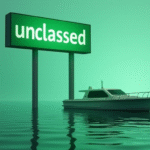Background on the Situation
The 25% tariffs imposed by the United States on steel and aluminum have created ripple effects in Mexico’s construction industry. This is due to several factors, including the export of various steel subproducts to the U.S. for transformation and subsequent return to Mexico as essential construction inputs.
Impact on Construction Sector
Juan Manuel Chávez, president of the Construction Industry Chamber of Jalisco (CMIC), explained to El Economista that the value of construction projects has increased by 5-6% for end consumers due to these tariff impacts, primarily affecting the housing and industrial park subsectors.
- Steel and Aluminum Subproducts: Some steel and aluminum products require cross-border insumos or processes that face U.S. tariffs, causing a rise in their binational cost.
- Housing Sector: The structural part of housing is expected to have the most significant impact. Bruno Martínez, president of the Industrial Parks Association, confirmed that this industry has been affected, though no projects have been canceled; instead, investments are currently paused.
- Industrial Parks: Chávez anticipates that with recent announcements, paused investment projects will resume. The Association of Industrial Parks and Logistics Centers (APIEJ) projected completing 600,000 square meters by year-end; he hopes this remains on track. Meanwhile, construction and industrial naves continue to be built and maintained, though leasing has been put on hold.
Market Imbalance Due to Tariffs
Chávez highlighted that the tariff-induced market imbalance also contributes to increased steel costs. The closure of the U.S. market has led to excess local supply, as exported tons remain in the domestic market.
- Local Producers: Although more supply might suggest lower prices, local producers aim to maintain profit margins and pass on the tariff-justified price increase.
- Export Market Shift: Some companies must find new export markets, incurring additional logistical, transportation, regulatory, and adaptation expenses.
Domino Effect Warning
Chávez warned that the steel and aluminum tariffs could trigger a domino effect across the entire industry. The impact on these two essential materials might lead to increased costs for machinery, tools, and finishes.
In 2024, the construction industry’s production value reached 40,145 million pesos, with 8,953 million pesos attributed to public infrastructure and 32,192 million pesos to private construction investment.
Key Questions and Answers
- What is the main issue? The 25% tariffs imposed by the U.S. on steel and aluminum have caused a rise in construction costs, particularly for housing and industrial parks in Jalisco, Mexico.
- How do tariffs affect construction costs? Tariffs lead to increased binational costs for steel and aluminum subproducts, causing a 5-6% rise in construction project values for end consumers.
- What is the current status of construction projects? While no industrial park projects have been canceled, investments are paused. Chávez expects these to resume with recent announcements.
- What are the additional factors driving up steel costs? Market imbalance due to U.S. tariffs and local producers maintaining profit margins amidst excess supply contribute to increased steel costs.
- What potential consequences could arise from these tariffs? The domino effect might lead to higher costs for machinery, tools, and finishes across the construction industry.






